With the advent of the New Silk Road’s Middle Corridor, new ports, rail lines and cold chain warehouses aren’t the only opportunity to transform the Caucasus region. It’s also an opportunity to transform the data.
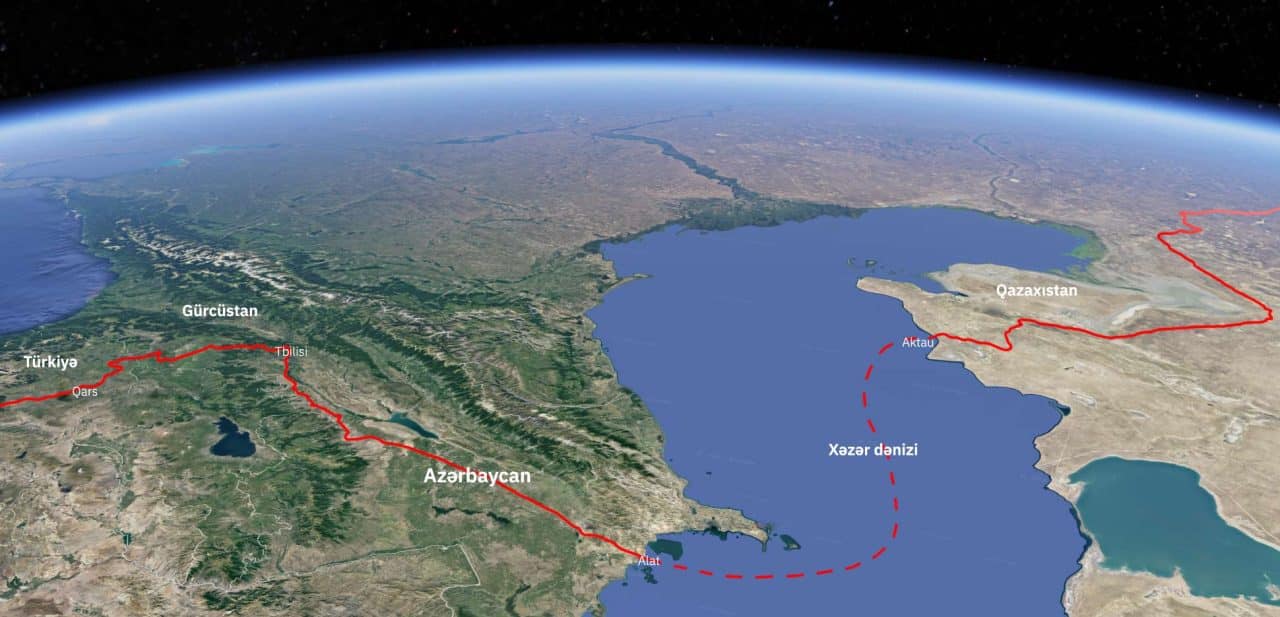
The New Silk Road, also known as the Belt and Road Initiative, is a massive infrastructure and investment project aimed at linking China with other countries in Asia, Europe, and beyond. The project is set to transform the economic landscape of the countries along the route — linking these two huge markets without crossing into heavily-sanctioned Russia or Iran. Azerbaijan, Georgia and Armenia sit strategically located at the four-way intersection of this “Middle Corridor” and trading routes between Russia, Iran and India. That crucial, central intersection has the potential to bring transformative value to the entire region.
The opportunity for Azerbaijan 🇦🇿
Let’s look first at Azerbaijan. Infrastructure development is one of the key transformative opportunities the country can leverage from the New Silk Road. Azerbaijan is already home to several important transportation infrastructure, including airports, seaports, and highways. The New Silk Road offers an opportunity to further upgrade and expand these transportation hubs, making it easier for goods and products to be transported in and out of the country. This, in turn, could increase the competitiveness of Azerbaijan’s transportation and logistics sector, enabling it to tap into new markets and generate additional revenue.
Another transformative opportunity that Azerbaijan can leverage from the New Silk Road is the potential for increased trade and investment. The effort will deepen economic and trade links between the countries along the route, and Azerbaijan is well-positioned to take advantage of these opportunities. The country has a thriving agriculture and food industry, which can benefit from increased access to new export markets along the New Silk Road. Azerbaijan is also home to several important natural resources, including oil and gas, which can also be leveraged to increase trade and investment in the country.
In addition to increased trade and investment, the New Silk Road will also bring new technologies and skills to people in the region. The project aims to promote the flow of knowledge, expertise, and technology between the countries along the route. Azerbaijan can benefit from that flow by accessing new technologies and skills that can help to further develop its transportation and logistics sector. This can also lead to increased competitiveness and improved economic performance for the country.
The opportunity for the Republic of Georgia 🇬🇪
Next is the Republic of Georgia, whose food producers and exporters also stand to benefit in numerous ways.
First, improved access to markets. The Middle Corridor opens up new markets in both Europe and Asia, which could potentially lead to increased exports, more revenue, and growth for the industry. The Middle Corridor also offers faster transit times compared to traditional sea routes. This is particularly beneficial for perishable goods like fruits, vegetables, and other food products, which could reach their markets fresher and command higher prices.
Lower Costs: shipping produce, wine or hazelnuts via the Corridor can reduce transportation costs by avoiding a long sea journey around the southern tip of Africa or through the congested Suez Canal. These lower transport costs could make Georgian food products more competitive in international markets. This increased trade and connectivity also can attract foreign investment into Georgia’s food production sector — leading to improved technologies, better infrastructure, and increased production capacity.
Further, the Middle Corridor offers Georgian food producers the opportunity to diversify their trade and reduce their reliance on any one particular market. This exposes Georgia’s unique wine and food products to different cultures, tastes, and preferences. And from that exposure comes the opportunity for agri-tourism, drawing tourists from Europe and Asia.
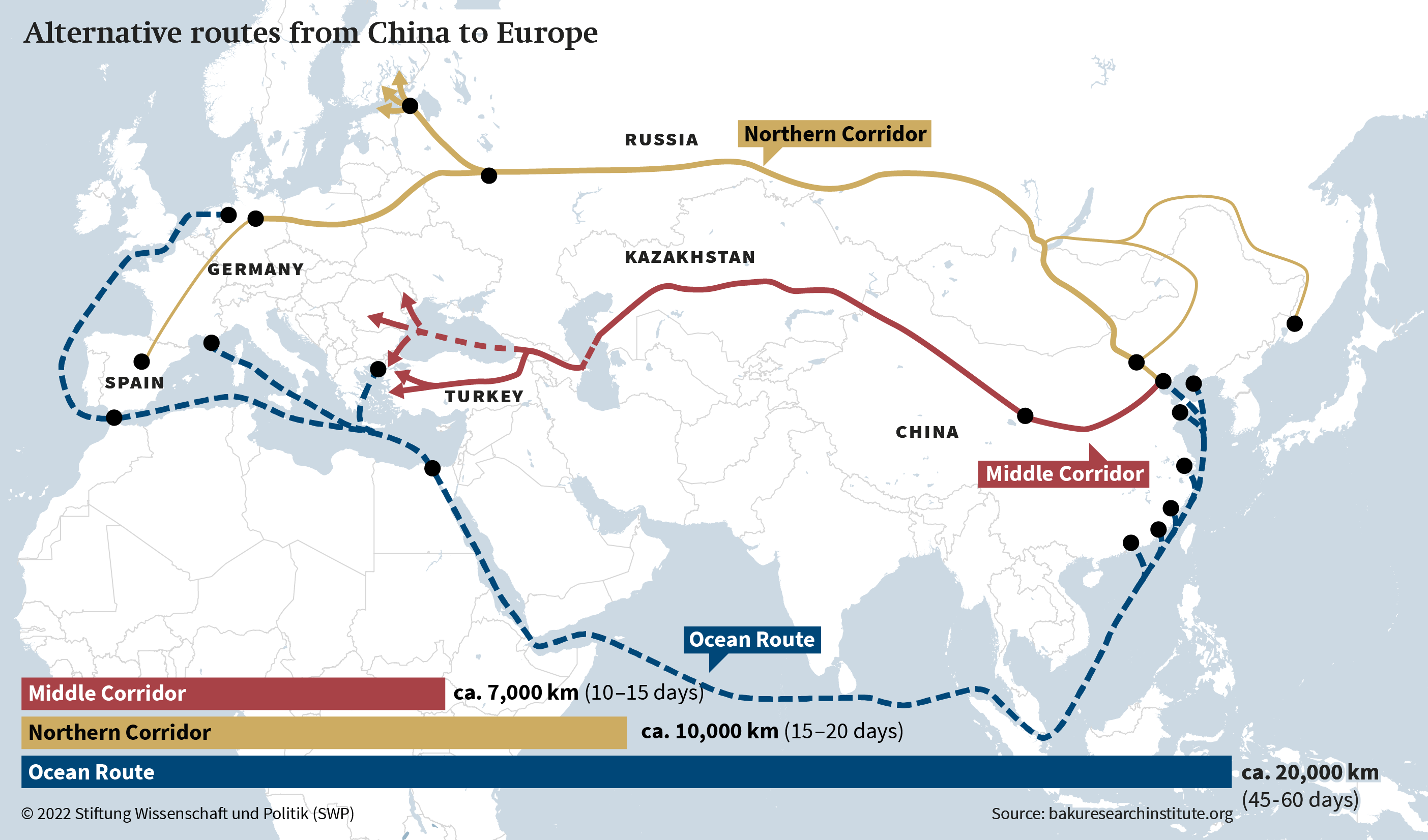
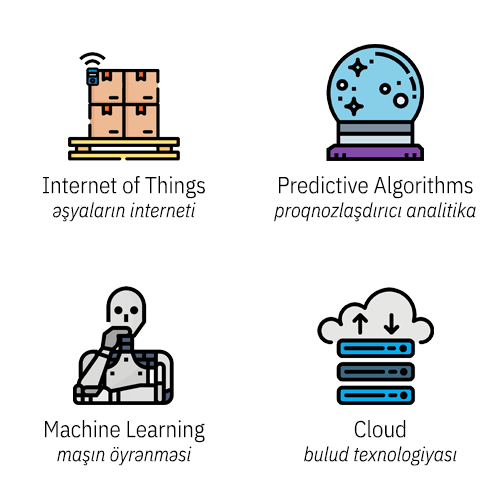
A chance to start fresh — with the latest technologies
This is where Transparent Path technologies come into play. A real-time supply chain visibility platform like ours could play a crucial role in helping both Azerbaijani companies and the Azerbaijan government participate in the New Silk Road. By providing real-time visibility into the movement of goods, these startups can help Azerbaijani companies better understand the flow of goods along the New Silk Road, and identify potential bottlenecks and delays. This information can then be used to make informed decisions about how to optimize their supply chain operations, increase efficiency, and reduce costs.
This also gives the government, and commercial enterprises, a better way to monitor and regulate the flow of goods along the New Silk Road. By providing real-time visibility into the movement of perishables, the government can better understand the flow of goods into and out of the country, and identify any potential risks or problems. This information can then be used to improve regulatory compliance and enhance border security, helping to ensure the smooth and safe movement of goods along the New Silk Road.
Agricultural opportunities
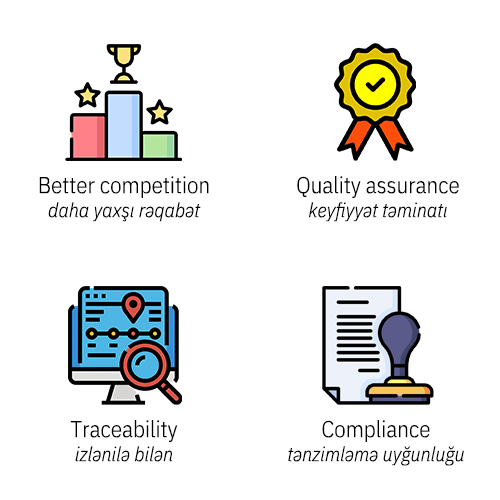
Let’s look at agriculture — one of the four priority sectors identified for diversifying the Azerbaijani economy beyond oil and gas. According to a 2022 report published by the US Department of Commerce, agriculture provides the largest number of jobs in Azerbaijan, employing 37% of the population. However, it currently only comprises 7% of the country’s GDP. The New Silk Road, combined with advanced technologies focused on real-time visibility, provide four key opportunities for countries like Azerbaijan.
Improved competitiveness / təkmilləşdirilmiş rəqabət qabiliyyəti / გაიზარდა კონკურენტუნარიანობა
First, improved competitiveness. Real-time supply chain visibility tech will help Azerbaijani agricultural companies, and the Ministry of Agriculture, better understand the flow of food shipments along the New Silk Road, enabling them to make informed decisions about how to optimize their supply chain operations, increase efficiency, and reduce costs. This can help to increase the competitiveness of Azerbaijani agricultural exports in a rapidly evolving global market.
Improved quality control / გაუმჯობესებული ხარისხის კონტროლი / təkmilləşdirilmiş keyfiyyətə nəzarət
Next, let’s talk about enhanced quality control. Being able to monitor the conditions of perishable shipments means having a sense of the ongoing quality of of food moving along the New Silk Road, giving governments and countries proof that their exports have met international standards for quality and safety. This can only enhance the reputation of the quality of those exports (think persimmons, apples, pomegranates, juices, grapes, dairy and meats), and increase demand for them across international markets.
Traceability / izlənilə bilən / მიკვლევადობა
We do a lot of talking at Transparent Path about the real-time in real-time supply chain visibility. Beyond visibility, that includes traceability. When a company (or a ministry) can make it easy to quickly trace the origin of goods and respond quickly to any potential problems or risks, it just enhances the security of Azerbaijani agricultural exports and increases confidence in their quality and safety.
Compliance / მარეგულირებელი შესაბამისობა / tənzimləmə uyğunluğu
Finally — as our food supply chains become increasingly complex and highly regulated, having this real-time visibility means more proof that regulatory requirements have been met and compliance is being monitored and enforced. This reduces the risk of penalties or other legal consequences for non-compliance and improves the overall business environment for Azerbaijani agricultural exports.
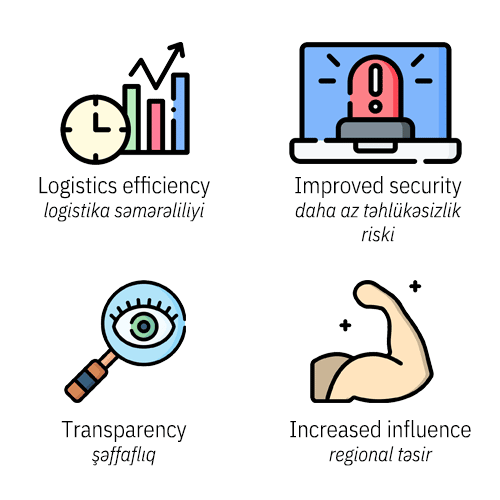
Logistics opportunities
It’s not just agriculture that benefits from advanced supply chain tech. Logistics and transportation enterprises and ministries can solve issues specific to their goals.
With the massive ongoing investment into logistics infrastructure, advanced tech can help all parties better understand the flow of goods along the New Silk Road, enabling them to make informed decisions about how to optimize infrastructure and transportation systems, increase efficiency, and reduce costs. This can help to improve the overall performance of Azerbaijan’s transportation network and increase the country’s competitiveness in the global market.
By providing eyes into shipping containers, Transparent Path technologies make it easier to identify and respond to any potential security risks in real time. This just enhances the safety, compliance and value of those goods traveling from Azerbaijan to Russia, China and Europe.
One ongoing challenge in logistics continues to be transparency. There are lots of actors in the supply chain who really don’t want others to know what’s going on. In order to help curb this kind of behavior, visibility tech like ours can help the Ministry of Transport know what’s really happening. Compliant, participatory companies can benefit from being in the spotlight. They also won’t worry about this transparency. Real-time transparency rewards good behavior, and dissuades bad behavior. Ultimately this reduces the risk of penalties or other legal consequences for non-compliance and improves the overall business environment for all companies participating in the New Silk Road.
Related to this transparency is the benefit of better cargo tracking. following the movement of goods and responding to any potential problems or delays almost immediately. Improved reliability and predictability within the transportation network will only increase the competitiveness of regional companies participating in the New Silk Road.
Lastly, the New Silk Road offers an opportunity for Azerbaijan, Georgia and Armenia to increase their political and economic influence, adding their voices to the global trade conversation. More and better data means these countries can improve economic and political ties with other nations along the route. This, in turn, can help to increase the stability and security of the region…which is in the best interest of all the countries involved.
The implications for regional chemical producers

On February 3, 2023, a freight train laden with highly volatile and potentially explosive chemicals derailed outside East Palestine, Ohio, in the US. Several of the cars carried vinyl chloride, an unstable, explosive and toxic chemical. Authorities said a wheel bearing on the train overheated, starting a fire and derailing the train. As this is an ongoing event, local police and fire leaders are concerned about the fumes hurting local residents, as well as a potential explosion shooting dangerous, flying metal shrapnel up to a mile away. The entire town was evacuated, with police arresting anyone entering the quarantine zone.
This cautionary tale is something to consider given that Azerbaijan, for example, increased exports of chemical products by 57.7% in 2022. Many chemicals cannot be subjected to temperatures that are too high or too low. Combustibles like phenols, propionic acids, acetic acids and cumenes must be kept cool to prevent explosive pressures from building within containers, resulting in potential deadly chemical fires like the one in Ohio. Other chemicals like alcohols, ethers, esters and ketones must be kept from reaching their flash point.
To help reduce the risk from transporting such chemicals along the New Silk Road, and the impact such an event could have on a country’s reputation, real-time visibility data can help keep a constant eye on these temperatures, making dangerous incidents less likely — especially if they were to happen in some other country!
Better data, better transparency, better business
These are just some of the ways where advanced supply chain technologies, and the data that comes from them, can help. The New Silk Road offers so many transformative opportunities for the region, including increased infrastructure development, trade and investment, technology transfer, and political and economic influence. Sitting at the crossroads, the region is well-positioned to leverage these opportunities, and by doing so, boosting its competitiveness and economic performance, and helping to secure these countries as key players in the global economy.
Meet us at the Caspian Agro conference, May 17-19, 2023 / 17-19 may 2023-cü il tarixlərində Bakıda, Caspian Agro konfransında bizimlə tanış olun / შეგვხვდით Caspian Agro კონფერენციაზე, 2023 წლის 17-19 მაისს
We’ll be in the USA Pavilion and look forward to meeting you!
You must be logged in to post a comment.